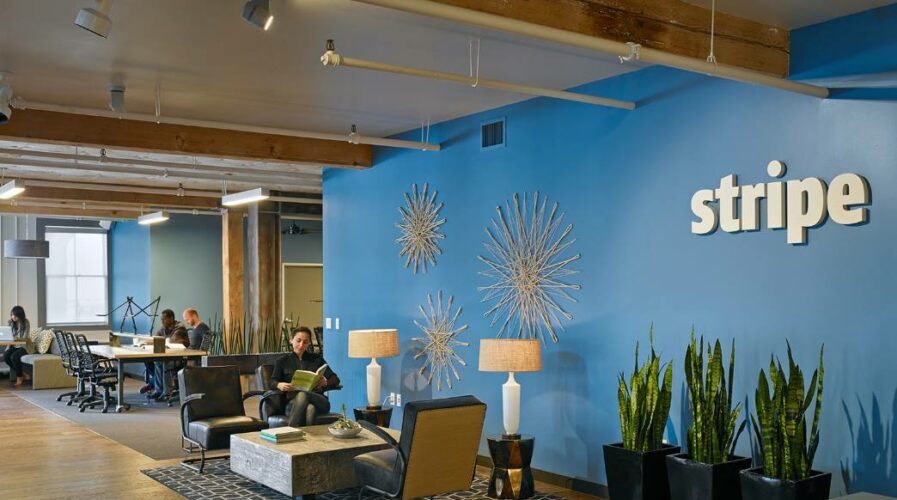Are you passionate about building tools for developers, solving complex infrastructure challenges, or accelerating global business growth? If so, a Software Engineer (SWE) role at Stripe might be the perfect fit for you. Stripe’s mission is to grow the GDP of the internet, and as an engineer, you’ll have the opportunity to work on cutting edge financial infrastructure that powers millions of businesses worldwide.
This guide will walk you through everything you need to know about landing a SWE role at Stripe, from understanding the company’s culture and job responsibilities to preparing for its unique interview process.
Why Work at Stripe?
Stripe is more than just a payment processor – it’s a financial infrastructure platform that supports businesses of all sizes. Stripe’s core products span 4 major categories:
- Global Payments: Tools for accepting payments, managing fraud, and verifying online identities.
- Revenue and Finance Automation: Solutions for subscription management, invoicing, tax handling, and financial reporting.
- Banking-as-a-Service: Enabling businesses to embed financial services like loans and card issuance into their products.
- Atlas: A platform that makes it easy for entrepreneurs to incorporate their business and begin accepting payments on Stripe
Stripe engineers don’t just write code – they solve real world problems. Whether it’s designing APIs for developers or working directly with customers to build custom solutions, Stripe offers a dynamic environment where your work has a tangible impact.
What Does a Stripe SWE Do?
At Stripe, software engineers take ownership of their projects from end to end. This includes:
- Designing new APIs and features.
- Leading cross-functional projects involving multiple engineers and stakeholders.
- Collaborating with customers to adapt solutions based on feedback.
- Maintaining high-quality standards for code readability, maintainability, and testability.
Role Expectations by Seniority
Here’s how responsibilities vary by level:
- Junior Engineers (L1/L2): Work on smaller tasks within larger projects. Within six months, they’re expected to take full ownership of their contributions.
- Mid-level Engineers (L3): Lead larger features and collaborate with product managers and customers. They may also mentor interns.
- Senior Engineers (L4): Oversee multiple workstreams, mentor team members, and act as liaisons to leadership.
Job Requirements
To succeed as a Stripe SWE, you’ll need:
Basic Qualifications
- Strong technical expertise in your area of focus (e.g., backend development, full stack engineering).
- Experience writing clean, maintainable code.
- Excellent communication skills, Stripe values clarity in both technical discussions and customer interactions.
- Entrepreneurial mindset, adaptability, curiosity, and collaboration are key traits.
- Empathy for users, Stripe engineers build tools for other developers.
Preferred Qualifications
- Experience designing APIs or mobile SDKs.
- Contributions to open-source projects.
- Familiarity with data modeling and scalable system design.
- Ability to collaborate effectively with cross-functional teams.
How to Prepare
Preparation is key when applying for a role at Stripe. Here’s how you can set yourself up for success:
1. Explore Teams and Roles
Stripe has diverse teams like Payments, Risk, Banking-as-a-Service, Treasury, and Capital. Spend time on Stripe’s careers page to identify which team aligns best with your skills and interests.
2. Build Real World Experience
Stripe’s interview process emphasizes practical skills:
- Start contributing to open source projects or debugging GitHub issues.
- Practice shipping small features under time constraints using unfamiliar codebases.
3. Revamp Your Resume
Stripe values clear communication. Your resume should:
- Tell a compelling story about your experiences.
- Highlight your technical achievements in ways that align with Stripe’s mission.
4. Practice Mock Interviews
Mock interviews are invaluable:
- Pair up with peers or mentors who can simulate both technical and behavioral questions.
- Practice explaining your projects to non-engineers—Stripe engineers often work with customers who lack technical expertise.
5. Network with Current Stripes
Reach out to current employees on LinkedIn or Exponent. They can provide insights into the hiring process and company culture.
The Interview Process
Stripe’s interview process is rigorous but fair. Here’s what to expect:
Timeline
The entire process typically takes 3–5 weeks (depends on role, urgency, grade)
Steps
- Recruiter Screen: A 30-minute conversation about your background and career goals. Be prepared to articulate why you want to work at Stripe.
- Technical Screen: One or two coding questions focused on real-world applications. Emphasis is placed on working solutions rather than efficiency.
- Onsite Interview Loop: Five rounds (Basis location, this could be virtual or hybrid)
- General Coding
- Debugging
- Integration
- System Design
- Behavioral
Deep Dive into Onsite Rounds
1. General Coding Round
You’ll solve algorithmic problems using data structures like arrays, strings, or dictionaries. The goal is production quality code rather than efficiency.
Example Problems:
- LRU Cache
- Course Scheduling
- Minimum Window Substring
Preparation Tips:
- Focus on solving problems that mimic real world scenarios rather than theoretical challenges.
- Use platforms like LeetCode or Exponent for practice.
2. Debugging Round
This round tests your ability to navigate an unfamiliar codebase:
- You’ll be given a GitHub repository with an open issue.
- Your task is to identify the problem and fix it within 45–60 minutes.
Preparation Tips:
- Practice downloading repositories from GitHub and debugging issues using your IDE of choice.
- Focus on articulating your thought process as you explore the codebase.
3. Integration Round
You’ll either:
- Add a small feature to an existing repository.
- Use a Stripe API to complete a task.
Preparation Tips:
- Familiarize yourself with Stripe’s API documentation.
- Contribute small features to open-source projects under time pressure.
4. System Design Round
Design scalable systems while emphasizing API design—a critical skill at Stripe.
Example Problems:
- Design a URL shortener.
- Build Amazon Kindle’s payment system.
Preparation Tips:
- Clarify requirements before diving into the design.
- Focus on simplicity while addressing scalability concerns.
5. Behavioral Round
This round assesses culture fit and collaboration skills.
Sample Questions:
- Tell me about a time when you resolved conflict within a team.
- How do you prioritize user needs in your work?
Preparation Tips:
- Use the STAR framework (Situation, Task, Action, Result) for structured answers.
- Align your responses with Stripe’s values like “Users First” and “Be Meticulous in Your Craft.”
Reminder:
Landing a SWE role at Stripe requires intense preparation & being on top of your tech game, but it’s also an opportunity to join one of the most innovative companies in tech today. By focusing on real world coding practices, networking with current employees, and aligning your experiences with Stripe’s mission, you’ll position yourself as a strong candidate ready to contribute meaningfully to growing the GDP of the internet.
Key Differences Between Stripe’s Coding Rounds and Those at Other Tech Companies
Stripe’s interview process for software engineers stands out in several ways compared to traditional big tech companies like FAANG (Facebook, Amazon, Apple, Netflix, Google). While many companies focus heavily on algorithmic problem solving and data structures, Stripe emphasizes real world engineering skills, practical problem solving, and code quality. Here’s a breakdown of the key differences:
1. Real World Problem Focus
Stripe’s coding rounds are designed to simulate real-world engineering challenges rather than abstract algorithmic puzzles.
- Stripe: Coding problems are often directly related to tasks you might encounter at Stripe, such as working with APIs, debugging existing codebases, or building small features. For example:
- Debugging a GitHub repository issue.
- Adding functionality to an existing codebase.
- Designing a rate limiter or ensuring sensitive data is protected.
- Other Tech Companies: Many companies focus on algorithm-heavy problems like dynamic programming or graph traversal (e.g., LeetCode style questions). These problems are often detached from day-to-day engineering tasks.
2. Emphasis on Code Quality
Stripe places a strong emphasis on writing clean, maintainable, and production ready code.
- Stripe: Candidates are assessed on their ability to write readable code with clear abstractions and proper test coverage. The focus is on correctness and maintainability rather than just efficiency. For example:
- Using idiomatic constructs in your chosen language.
- Writing unit tests without being explicitly prompted.
- Other Tech Companies: While code quality matters, the emphasis is often on optimizing for time and space complexity. Candidates may not be required to write production-level code during the interview.
3. Unique Rounds: Debugging and Integration
Stripe includes two unique rounds debugging and integration that are rarely found in other tech interviews.
- Debugging Round:
- Candidates are given an unfamiliar codebase from a GitHub repository with an open issue.
- They must quickly understand the codebase, identify the bug, and fix it within a time limit.
- This round tests adaptability and problem solving in real world scenarios.
- Integration Round:
- Candidates either add a feature to an existing repository or work with Stripe APIs.
- This round evaluates how well candidates can integrate new functionality into existing systems while considering edge cases and documentation usage.
- Other Tech Companies: Debugging and integration tasks are uncommon. Most companies stick to standalone coding problems or pair programming exercises
4. API Centric Challenges
Given Stripe’s API-driven products, many interview questions revolve around designing or working with APIs.
- Stripe: Candidates may be asked to:
- Design an API for a specific use case (e.g., payment processing).
- Use Stripe’s API to solve a problem during the integration round.
- Discuss API scalability and usability in system design rounds.
- Other Tech Companies: While some companies (e.g., Amazon) also include API-related questions, they are not as central to the interview process as they are at Stripe.
5. Less Focus on Pure Algorithms
Stripe’s coding interviews prioritize practical problem solving over theoretical algorithmic knowledge.
- Stripe: Questions often involve common data structures like arrays, dictionaries, and strings but avoid niche topics like red-black trees or advanced graph algorithms. For example:
- Parsing logs for sensitive information.
- Implementing basic regex parsers.
- Solving scheduling problems relevant to payments.
- Other Tech Companies: Algorithm-heavy rounds are common, with questions focusing on dynamic programming, graph theory, or combinatorics (e.g., solving NP hard problems).
6. Open Resource Policy
Stripe allows candidates to use online resources like documentation or Stack Overflow during certain rounds.
- Stripe: Candidates can look up solutions or refer to documentation during debugging or integration tasks. This reflects real-world engineering practices where developers often rely on external resources.
- Other Tech Companies: Most companies prohibit external resource usage during interviews.
7. Behavioral Alignment with Engineering Principles
While many companies assess culture fit through behavioral interviews, Stripe integrates its operating principles into technical rounds as well.
- Stripe: Interviewers look for alignment with values such as “Users First” and “Be Meticulous in Your Craft.” Candidates are expected to explain their decisions in terms of user impact and engineering craftsmanship throughout the process.
- Other Tech Companies: Behavioral assessments are typically confined to dedicated non-technical rounds and focus less on integrating company values into technical discussions.
Examples of Stripe Specific Interview Questions
Here are some examples of questions you might encounter at Stripe that reflect its unique approach:
- Debugging Round:
- Fix a failing unit test in an unfamiliar repository.
- Identify why a payment processing function is throwing errors under certain conditions.
- Integration Round:
- Add a feature that calculates tax rates using Stripe’s API.
- Modify an API endpoint to handle additional request parameters.
- General Coding:
- Blur sensitive credit card information from logs.
- Design a rate limiter for API requests.
- System Design:
- Build the architecture for a subscription billing system.
- Design an API for managing user authentication tokensb.
Reminder:
Stripe’s coding rounds stand out because they closely mirror real-world software engineering tasks. The emphasis on debugging, integration, APIs, and clean code makes the process feel more practical and less theoretical than traditional tech interviews. To succeed at Stripe, candidates should focus on honing their ability to write maintainable code, work with APIs, debug unfamiliar systems quickly, and articulate their thought process effectively – all while keeping user impact in mind.
What specific skills does Stripe look for in a system design interview
Key Skills Stripe Looks for in a System Design Interview
Stripe’s system design interviews are tailored to assess a candidate’s ability to architect scalable, reliable, and user-friendly systems. Given Stripe’s API driven and payment centric products, the interview places special emphasis on designing systems that align with real world engineering challenges. Below are the specific skills and attributes Stripe evaluates during this round:
1. Problem Analysis and Requirement Gathering
Stripe expects candidates to approach system design problems like a requirements engineer. This means:
- Clarifying Requirements: Proactively ask clarifying questions to fully understand the problem scope. For example, if asked to design a payment gateway, you might inquire about transaction volume, latency requirements, or security constraints.
- Defining Assumptions: Explicitly state any assumptions you make during the design process (e.g., “I’m assuming this system will handle 10,000 requests per second”).
- Breaking Down the Problem: Decompose the problem into smaller components or subsystems (e.g., authentication, data storage, API design).
2. API Centric Design
Stripe products are heavily API driven, so candidates must demonstrate expertise in designing robust APIs:
- API Design Skills: Define clean, intuitive APIs with clear endpoints and parameters. For instance, when designing a payment API, you might discuss endpoints for creating payments, handling refunds, and managing webhooks.
- Usability Focus: Ensure APIs are developer friendly by minimizing complexity and providing clear documentation.
- Scalability Considerations: Discuss how APIs would handle high traffic or large scale integrations.
3. Scalability and Reliability
Stripe handles billions of transactions globally, so scalability and reliability are critical:
- Scalable Architectures: Propose designs that can handle high concurrency and large data volumes (e.g., using load balancers or sharded databases).
- Fault Tolerance: Identify potential points of failure (e.g., database downtime) and suggest mitigation strategies such as replication or failover mechanisms.
- Performance Optimization: Discuss caching strategies (e.g., Redis for frequently accessed data) or queueing systems (e.g., Kafka) to manage asynchronous tasks.
4. Component-Level Design
Stripe values meticulous attention to detail in component-level architecture:
- Data Modeling: Design expressive yet simple data models. For example, when designing a subscription billing system, you might define tables for users, plans, invoices, and payment history.
- System Components: Explain how different components interact (e.g., frontend sends requests to an API gateway, which communicates with backend services).
- Tradeoff Analysis: Weigh the pros and cons of design choices (e.g., relational vs. NoSQL databases) based on use cases.
5. Security and Compliance
Given Stripe operates in the financial domain, security is paramount:
- Data Privacy: Discuss how personally identifiable information (PII) will be protected (e.g., encryption at rest and in transit).
- Authentication/Authorization: Propose secure methods for user authentication (e.g., OAuth 2.0) and role-based access control.
- Compliance Awareness: Show an understanding of industry standards like PCI-DSS for payment processing.
6. Communication and Collaboration
Stripe places high value on clear communication during system design interviews:
- Think Aloud: Articulate your thought process as you navigate the problem.
- Collaborative Approach: Treat the interviewer as a collaborator check in periodically to ensure alignment on the solution.
- Tradeoff Discussions: Be transparent about tradeoffs in your design decisions (e.g., prioritizing consistency over availability in a distributed system).
7. High Level System Design Framework
Candidates are expected to follow a structured approach to system design:
- Define Requirements:
- Functional requirements (e.g., “The system must process payments”).
- Non-functional requirements (e.g., “The system must handle 100k transactions per second”).
- High-Level Architecture:
- Propose an overall blueprint of the system with key components like APIs, databases, load balancers, etc.
- Deep Dive into Components:
- Discuss specific components such as database schema or caching layers.
- Address Bottlenecks and Scaling:
- Identify potential bottlenecks and propose solutions like horizontal scaling or partitioning.
- Review Tradeoffs:
- Summarize tradeoffs made during the design process.
8. Example System Design Problems at Stripe
Here are examples of problems that reflect Stripe’s focus on real-world scenarios:
| Problem Statement | Key Skills Assessed |
|---|---|
| Design a subscription billing system | Data modeling, API design, scalability |
| Build a rate limiter for API requests | Performance optimization, fault tolerance |
| Architect a webhook delivery system | Reliability, asynchronous processing |
| Design a payment processing gateway | Security compliance (PCI-DSS), fault tolerance |
| Create an analytics dashboard for merchants | Data aggregation, scalability |
9. Tools & Resources for Preparation
To excel in Stripe’s system design interviews:
- Study Grokking the System Design Interview for foundational concepts.
- Review Stripe’s engineering blog for insights into their approach to APIs and scalability.
- Practice whiteboarding tools like Whimsical or Miro if interviewing virtually.
Stripe’s system design interviews emphasize practical engineering skills over theoretical knowledge. By focusing on real-world scenarios such as API usability, scalability challenges, and fault-tolerant architectures and by communicating your thought process clearly – you can demonstrate your ability to design systems that align with Stripe’s high standards.
How can I stand out in the behavioral round at Stripe
The behavioral round at Stripe is designed to assess your alignment with the company’s values, your ability to collaborate effectively, and your leadership potential. Stripe places a strong emphasis on cultural fit, so excelling in this round means demonstrating that you embody the company’s principles while showcasing your unique experiences and skills. Here’s how you can stand out:
1. Understand Stripe’s Operating Principles and Values
Stripe’s culture is deeply rooted in its operating principles, which guide how employees work and interact. To stand out, you must align your responses with these principles:
Key Principles:
- Users First: Stripe prioritizes user needs above all else. Show how you’ve gone above and beyond to solve user problems or improve their experience.
- Move with Urgency and Focus: Highlight instances where you quickly delivered impactful results without compromising quality.
- Be Meticulous in Your Craft: Stripe values attention to detail and high standards. Share examples of work where you demonstrated craftsmanship and precision.
- Curiosity and Resilience: Discuss times when you overcame challenges or learned something new to solve a difficult problem.
- Macro-Optimism: Show that you’re forward-thinking and optimistic about solving big problems, even if they seem daunting.
Preparation Tip:
Review Stripe’s Operating Principles and reflect on how your past experiences align with them. Incorporate these principles into your answers to demonstrate cultural alignment.
2. Craft a Compelling Story Bank
Stripe interviewers are looking for authentic stories that demonstrate your skills, values, and decision-making process. Prepare a “story bank” of examples using the STAR framework (Situation, Task, Action, Result) to answer common behavioral questions.
Key Themes for Stories:
- Leadership: Share examples where you led a team or project successfully.
- Example: “I led a cross-functional team to redesign our API documentation based on user feedback, resulting in a 30% reduction in support tickets.”
- Collaboration: Highlight times when you worked effectively with diverse teams or stakeholders.
- Example: “I collaborated with non-technical stakeholders to simplify our onboarding process, improving adoption rates by 20%.”
- Problem-Solving: Showcase how you approached complex challenges creatively.
- Example: “When faced with a failing deployment pipeline, I identified bottlenecks, implemented parallel processing, and reduced build times by 50%.”
- User-Centric Thinking: Demonstrate empathy for users and focus on delivering value.
- Example: “I conducted user interviews to identify pain points in our payment system and implemented changes that increased customer satisfaction scores by 15%.”
3. Prepare for Common Behavioral Questions
Stripe’s behavioral questions often revolve around collaboration, leadership, adaptability, and user impact. Here are some examples:
Sample Questions:
- Tell me about a time when you resolved conflict within a team.
- Focus on how you navigated differing opinions while maintaining team harmony.
- How do you prioritize user needs in your work?
- Highlight specific methods like user research or feedback loops.
- Describe a time when you failed at something. What did you learn?
- Be honest but emphasize resilience and growth.
- Tell me about a project where you had to collaborate with non-technical stakeholders.
- Show how you adapted your communication style to bridge gaps between technical and non-technical perspectives.
Preparation Tip:
Practice answering these questions aloud using the STAR framework. Ensure your answers are concise but impactful.
4. Deliver an Impactful Elevator Pitch
The behavioral round often begins with open-ended questions like “Tell me about yourself” or “Why do you want to work at Stripe?” Use this opportunity to deliver an elevator pitch that highlights:
- Your technical expertise and achievements.
- Your career goals and why they align with Stripe’s mission (e.g., increasing the GDP of the internet).
- Your enthusiasm for Stripe’s culture of innovation and collaboration.
Example Elevator Pitch:
“I’m a software engineer with five years of experience building scalable APIs for fintech products. In my current role, I led the development of a payment processing system that handled over 1 million transactions monthly with zero downtime. I’m passionate about creating tools that empower businesses, which is why I’m excited about Stripe’s mission to grow the GDP of the internet. I thrive in collaborative environments like Stripe’s, where innovation and craftsmanship are deeply valued.”
5. Ask Thoughtful Questions
The behavioral round is also an opportunity for you to ask questions about Stripe’s culture and team dynamics. Thoughtful questions can demonstrate genuine interest and preparation.
Examples of Questions You Can Ask:
- How does Stripe ensure its teams stay aligned with its “Users First” principle?
- What does success look like for someone in this role after six months?
- How does Stripe foster collaboration across globally distributed teams?
- Can you share an example of how feedback is incorporated into projects at Stripe?
6. Demonstrate Authenticity
Stripe values authenticity and individuality – don’t try to fit into a mold or give overly rehearsed answers.
Tips for Authenticity:
- Be honest about challenges or failures but frame them as learning opportunities.
- Share personal anecdotes that highlight your unique perspective or approach.
- Let your enthusiasm for Stripe’s mission shine through naturally.
7. Showcase Emotional Intelligence
Stripe places significant importance on collaboration and teamwork, so emotional intelligence (EQ) is critical during the behavioral round.
Ways to Demonstrate EQ:
- Show empathy by discussing how you’ve supported teammates or resolved conflicts diplomatically.
- Highlight self-awareness by reflecting on areas where you’ve grown professionally.
- Exhibit adaptability by sharing how you’ve adjusted to changing priorities or feedback.
Snapshot:
To stand out in the behavioral round at Stripe:
- Align your responses with Stripe’s operating principles like “Users First” and “Be Meticulous in Your Craft.”
- Prepare authentic stories that showcase leadership, collaboration, problem-solving, and user-centric thinking.
- Deliver an impactful elevator pitch that ties your experience to Stripe’s mission.
- Ask thoughtful questions that demonstrate curiosity about the company’s culture.
By combining preparation with authenticity, you’ll position yourself as not just a skilled engineer but also as someone who embodies the values that make Stripe successful.
Conclusion
Preparing for a software engineering role at Stripe is a rewarding journey that requires a blend of technical expertise, problem solving skills, and alignment with the company’s values. From tackling real world coding challenges in the technical rounds to demonstrating your ability to architect scalable systems in the system design interview, Stripe’s process is designed to identify engineers who are not only technically proficient but also meticulous, user-focused, and collaborative.
The behavioral round further emphasizes the importance of cultural fit, giving you the chance to showcase your leadership, resilience, and passion for Stripe’s mission to grow the GDP of the internet.
As you prepare, remember that success lies in balancing technical preparation with authentic storytelling. Practice coding problems that reflect real-world scenarios, refine your system design approach, and craft compelling narratives about your experiences. Most importantly, let your enthusiasm for Stripe’s mission and values shine through.
If you’re feeling like you could use a little extra support – whether it’s fine tuning your resume, optimizing your LinkedIn profile, or preparing for interviews – I’m here to remind you that help is just a step away. Reach out to The Talent Company, where experts can guide you in presenting your best self and navigating the process with confidence.
You’ve got what it takes to succeed, and with the right preparation and mindset, you’re well on your way to joining one of the most innovative companies in tech.
All The Best, I’m rooting for you!





